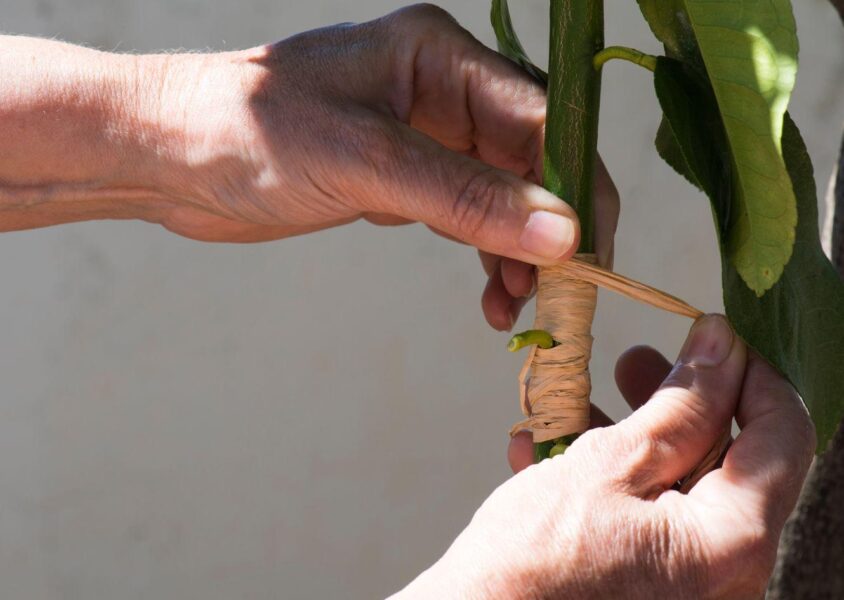Grafting Is The Secret

Sometimes you might have wondered why your neighbor’s rose plant produces more roses than yours. The answer lies in the technique called grafting.
Grafting is a horticultural technique. A piece of one plant (the scion) joins to the root system of another plant (the rootstock). There are several techniques, including cleft, bark and whip and tongue grafting. The specific technique will depend on the grafted plants and the desired outcome.
In general, grafting is combines the desirable traits of one plant with the root system of another plant. For example, a plant with a disease-resistant root system may be grafted to a plant with desirable fruit or flower characteristics.
Grafting can be a complex process and requires careful planning and execution to be successful. Most often only trained horticulturists or nursery professionals are successful. It produces plants that have specific characteristics or traits, such as disease resistance, improved growth, or specific flower or fruit characteristics.
Advantages of Grafting
There are several advantages to using grafting in plant cultivation, including the following:
Grafting can combine the desirable traits of one plant with the root system of another plant. It can result in plants that have improved growth, yield, or other characteristics. It can produce plants with a disease-resistant root system, which can help protect the plant from certain diseases.
Grafting can produce plants better adapted to specific growing conditions, such as soil type or climate. It can produce plants more quickly than growing them from seed. It can be particularly useful for plants that take a long time to grow from seed or for plants that do not produce viable seeds. Additionally, it can propagate rare or endangered plant species, which can help conserve these plants and ensure their continued survival.
Grafting is possible with many plants, including trees, shrubs, and herbaceous plants. Many fruit trees, such as apples, pears, peaches, and citrus, use it to produce plants with specific fruit characteristics or to provide disease resistance. Some vegetables, such as tomatoes and peppers, also improve yield and disease resistance with grafting.
You can use it with many ornamental plants, such as roses and camellias to produce plants with specific flower or foliage characteristics. Some trees and shrubs, such as maples and lilacs, can produce plants with specific growth or flower characteristics when grafted.
It is possible to graft most plants if they have compatible root systems. But, some plants are more challenging to graft than others, and the success of grafting depends on many factors.